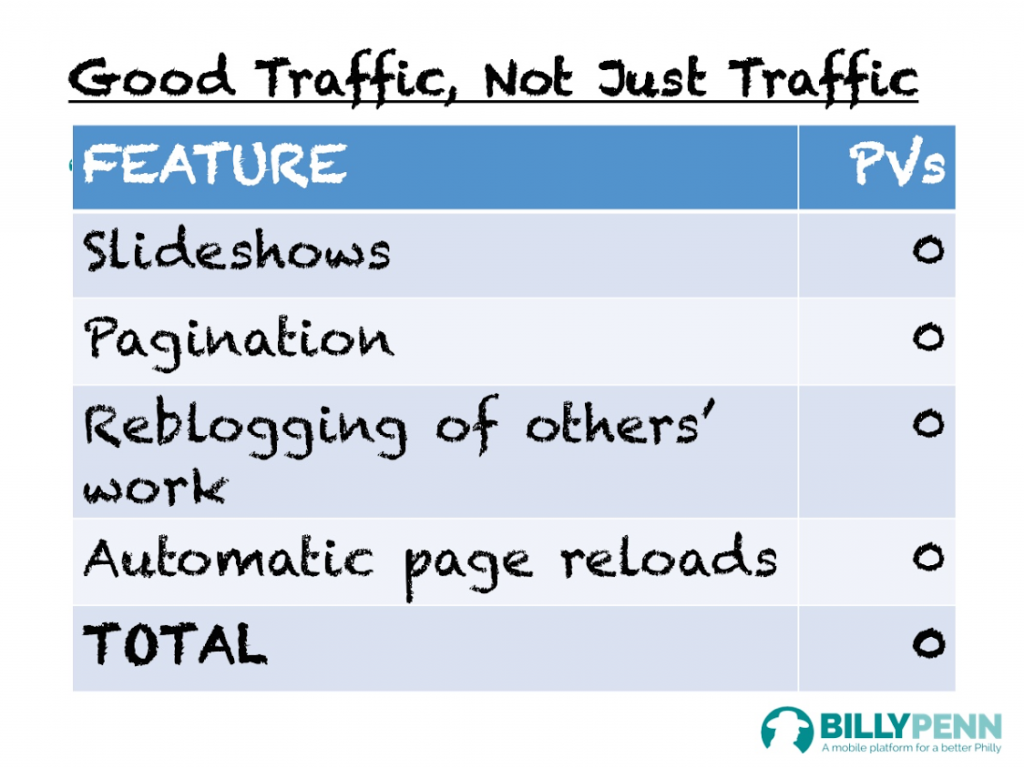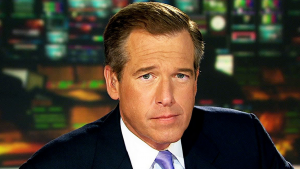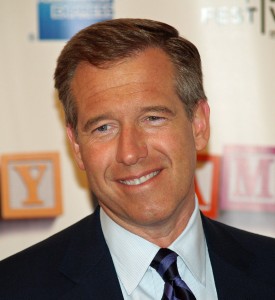In October of last year, the New York Times ran an in-house interview with its own editor in charge of environmental coverage, Adam Bryant. The interview was about how the Times treats climate change. It included this exchange:
Q. Is the equivalency issue dead? To what extent should we feel obligated to include the views of climate change skeptics?
A. Claims that the entire field of climate science is some kind of giant hoax do not hold water, and we have made a conscious decision that we are not going to take that point of view seriously. At the same time, there is a huge amount of legitimate debate and uncertainty within mainstream science. Scientists are pretty open about not being sure how bad things will get, or how quickly. These are the valid scientific issues and uncertainties that we want to cover.
A recent front-page piece by Justin Gillis — Scientists Trace Extreme Heat in Australia to Climate Change – provides a good example of providing informed second opinions on a topic. In his piece, Justin quoted an expert who has often been skeptical of claimed links between weather events and global warming in the past. But in this new study we were reporting on, he said the evidence was strong. That insight is more useful to readers than quoting someone who believes the entire field of study is built on a pillar of sand.
We have made a conscious decision that we are not going to take that point of view seriously. You don’t hear that very often from editors and producers of mainstream news coverage. The prohibition against “taking sides” in a public controversy normally prevents it. That the Times had made an exception in the case of climate change denialism was welcome news, an important development, but as soon as I saw Adam Bryant’s statement, I thought: Let’s wait for the 2016 campaign. Then we’ll see.
A few months earlier, Grist.org, which does environmental news and commentary from an unapologetically Green point of view, published Meet the climate deniers who want to be president by Ben Adler. The likely candidates fall into four categories, Adler wrote:
(1) Flat-Earthers, who deny the existence of manmade climate change; (2) Born-Again Flat-Earthers, who do the same, but who had admitted climate change exists back before President Obama took office; (3) Do-Nothings, who sort of admit the reality of climate change but oppose actually taking any steps to prevent it; and (4) Dodgers, who have avoided saying whether they believe climate change is happening, and who also don’t want to take any steps to alleviate it.
Notice: the first two categories would fall under Adam Bryant’s “we are not going to take that point of view seriously.” Candidates in category (3) would not. Part of the purpose of campaign journalism is to “convert” the candidates in category (4) into ones, twos or threes, or some other position. Getting them to clarify what they believe — and comparing it to known facts — is the whole point of having journalists involved in the deal. Adler sizes up the field:
Louisiana Gov. Bobby Jindal and Wisconsin Gov. Scott Walker fall into the latter [dodgers] category. The Do-Nothings are blue and purple state governors, Chris Christie of New Jersey and John Kasich of Ohio. In a sign of how far rightward Republicans have moved since 2008, these are actually the guys who are trying to position themselves as relatively moderate and pragmatic. The Born-Agains are Florida Sen. Marco Rubio and former Arkansas Gov. Mike Huckabee. Both are staunch conservatives but only partial wingnuts. Back when that meant believing in climate change, they did, but they have since followed their base into fantasyland. Everyone else is an outright denier and always has been.
Again, that is stated from an openly “green” point of view. This is from National Journal’s guide, which is more willing than Grist to call a candidate’s position “unclear.”
There is now near unanimous consent among Republican congressional leadership and likely 2016 contenders that the climate is changing. But that’s as far as the GOP climate consensus goes, and it’s a far cry from the conclusion of the vast majority of scientists who say that human activity is a primary driver of global warming. Many would-be 2016 contenders publicly question the extent to which man-made greenhouse gas emissions contribute. And few say that the U.S. should take action to cut emissions.
(My italics.) So here’s the problem: As more and more journalists come to the conclusion that they should no longer take seriously the arguments of “someone who believes the entire field of study is built on a pillar of sand,” the Republican presidential field has more and more of these someones, and candidates who often flirt with that position. What to do?
I see four ways campaign journalists might go. All of them have problems.
1. Normalize it: treat denialist claims like any other campaign position. Here you simply say “the Senator doubts that climate change is really happening” and leave it at that, treating this as a normal position in a debate that carries on. You deal with a candidate’s denialism by not drawing any special attention to it. Just as some candidates think we need a fence at the southern border and others don’t, some think climate change is a myth or hoax and others do not. That’s politics! Advantage: It appears to be the most neutral way of handling the issue. And in a bitterly contested election neutral sounds awfully good. The problem: gross abandonment of the “checking” function that a free press is supposed to provide. It’s hard to feel good about that.
2. Savvy analysis: is denialism a winning move or is it costing the candidate? Here you go beyond stating “the Senator doubts that climate change is real” to look at the likely gain or loss in taking such a position. The risks and the rewards. What the polling says. Bracketing all questions of evidence — of truth — you focus instead on the smartness of the tactic. Advantage: you get to sound savvy and smart yourself, cool and analytical, not like those hotheads at Grist. Problem: Who cares if it’s true, let’s find out if it works! shatters the illusion that journalists can and do “hold their feet to the fire.” It’s hard to part with that.
3. Persistence: Call it what it is — a rejection of the science — and keep calling it that. “The Senator doubts that climate change is real, a position at stark odds with an overwhelming scientific consensus.” Here, you take responsibility for pointing out to voters that, while the candidate has his views, the evidence does not support them. And you do this not once, but every time the issue comes up. This is the fact-checking solution. Advantage: puts the campaign press back on the side of truthtelling. A major plus! Problem: likely to result in charges of bias from the candidates so described, likely to trigger the backfire effect among some voters (“in which corrections actually increase misperceptions among the group in question.”)
4. Confrontation: Try to raise the costs of denialism. Sort of like this…
Senator, the Intergovernmental Panel on Climate Change said in 1990, “Emissions resulting from human activities are substantially increasing the atmospheric concentrations of greenhouse gases,” leading to global warming. They said it again in 1995. They said it again, but more strongly in 2001. They were even more emphatic in 2007. And in 2014 they said they were 95 percent certain that human action was the primary cause of global warming. The World Bank has come to similar conclusions. The position you have taken on this seems to suggest that you have better evidence than they do. Will you be making that evidence public? And may we have the names of your science advisors so we can ask them where they are getting their information? (Links.)
You can quarrel with the wording of my hypothetical press conference question but I hope you get the point. Actively confronting the candidate is a more aggressive way to go. Advantage: Fulfills the watchdog role of the press and says to politicians: there are limits, this is beyond the pale. Problem: Easily politicized, certain to trigger culture war attacks. Plus the backfire effect is likely to be even stronger.
What to do? All four paths have problems. In my view 2.) is the worst option, 1.) is not much better, 3.) is probably the best choice, but that doesn’t mean it will make a difference, and 4.) is the riskiest but might be a worth a try.
On Monday, Senator Ted Cruz will become the first candidate to officially announce his run for President. In reporting this news, the Washington Post reviewed Cruz’s career and positions. About climate change the Post reporters, Katie Zezima and Robert Costa, wrote this:
Cruz does not believe in climate change and has said that data does not support it. Cruz chairs the Senate committee that oversees NASA and has said that the agency needs to focus more on space exploration and less on Earth science.
That’s Normalize it: treat denialist claims like any other campaign position. But we’re just getting started. How will the rest of the coverage line up? I don’t know. The most likely pattern is a mix of 1.) and 2.) from my list of coverage paths. I do know this. Claims that climate science is a hoax, or that human action is not a factor are not defensible positions in a political debate. They are ways of saying: hey, the evidence doesn’t matter.
Honest journalists have to look that statement in the face and decide what to do about it. 
After Matter: Notes, Reactions & Links
UPDATE: JULY 1, 2015. This study by Media Matters (a liberal leaning watchdog group) looks at how the major news providers handled climate change denialism among Republic candidates for president.
Several months into the 2016 presidential campaign, the media is frequently failing to fact-check statements by presidential candidates denying the science of climate change. Seven major newspapers and wire services surveyed by Media Matters have thus far failed to indicate that candidates’ statements conflict with the scientific consensus in approximately 43 percent of their coverage, while the major broadcast and cable news outlets other than MSNBC have failed to do so 75 percent of the time.
UPDATE: May 21, 2015.
BEDFORD, N.H., May 20 (Reuters) – Republican Jeb Bush said on Wednesday that the Earth’s climate is changing but that scientific research does not clearly show how much of the change is due to humans and how much is from natural causes…
“Look, first of all, the climate is changing. I don’t think the science is clear what percentage is man-made and what percentage is natural. It’s convoluted. And for the people to say the science is decided on, this is just really arrogant, to be honest with you,” he said.
There is a lot to report by way of reactions and follow ups to this piece. Ready?
My post highlighted how passive and uncritical the Washington Post’s initial summary of Ted Cruz’s climate change position was. Since then, the Post has really sprung into action.
Chris Mooney, who blogs about climate change for the Post (he also studies denialism) dug into some of the claims Ted Cruz makes, including the data he was relying on and the scientists who reported that data. One of them is Carl Mears, physicist and senior scientist with Remote Sensing Systems. Mooney writes:
To explore Mears’s views further, I did one thing journalists can do when covering the climate views of presidential candidates — I contacted the researcher. And his response was quite critical of Cruz’s approach to the evidence on this issue…
“Satellite data demonstrate for the last 17 years, there’s been zero warming. None whatsoever,” Ted Cruz has said. Here’s Max Ehrenfreund, writing at the Post’s Wonkblog about that claim:
Although the pace of global warming has slowed, the planet is still getting warmer, and 2014 was the hottest year on record for average temperatures worldwide. What’s more, Cruz distorts the data by choosing a 17-year-period as his yardstick, since 1998 was an exceptionally warm year. Focusing on the past 16 years or the past 18 years, the pace of warming has been more dramatic.
Philip Bump at the Post’s The Fix blog: Ted Cruz compares climate change activists to ‘flat-Earthers.’ Where to begin? Snippet:
What Cruz is doing is treating as valid one magazine article from 40 years ago but rejecting as hopelessly flawed study after study showing that the world is warming.
This all happened since he announced, indicating that climate change denial may become an issue that follows Cruz around as he campaigns.
Number of times Obama and Romney were asked about climate change in 2012 presidential debates: zero. Number of times they brought it up: zero. (Link.)
David Roberts of Grist, who is gone further into this subject than just about anyone (with the possible exception of Chris Mooney) comments on my post.
To make it consequential, journalists would have to push — ask about climate again and again, grind against the going-along-getting-along gears, make a fuss. That would inevitably entail some awkward encounters and social ostracism, not because D.C. is a hive of deniers, but simply because there’s a social order and behaving that way disturbs it. A journalist who did too much of that would wind up on the outside, branded an activist.
Here’s how the AP handled Ted Cruz’s views on climate in its round-up:
CLIMATE CHANGE
When Cruz recently startled a New Hampshire 3-year-old girl by declaring “your world is on fire,” he was attacking the Obama administration’s foreign policy – not talking about climate change. Cruz says that for the past 17 years, satellite images show that “there’s been zero global warming.” But scientific experts say satellite data is the wrong way to measure global warming, which the vast majority of scientists say is happening and is caused by the burning of fossil fuels. Temperatures at ground level show that the planet has warmed since 1998 and that 2014 was the hottest on record. Cruz has acknowledged that climate change is real – but does not attribute that to human activity.
That’s option 3 from my list.
Michael Hiltzik, columnist for the Los Angeles Times, responds to this post: How should journalists treat candidates who deny climate change? His idea:
Educate the readers about the reason for climate change denial, especially its absorption into the Republican mainstream. The driving force, you see, is money.
Climate change denial, at its core, is an economic position, not scientific. Reporters who take a basic “follow the money” approach soon discover that their path leads them to fossil fuel interests.
I have had to do this only three, four times in 12 years of blogging. I closed the comments at this post.
Re-litigating the science that has led to the conclusion that climate change is happening and human activity is the primary cause, hand-to-hand combat over any kind of study cited, shouting “just politics” at evidence no matter how dry or technical it is— this is a pointless exercise at a press criticism blog. I am not allowing my site to become a forum for the denialism I am writing about.
Ars Technica explains how it moderates climate change comments threads. Excerpt:
Starting a discussion by throwing out phrases like “the whole thing is a giant fraud” is a quick way to get a moderator’s warning. Even if you’re not aware of the history of our understanding of the greenhouse effect (there’s over a century of it) or the decades’ worth of work that has built our modern understanding of the climate, it should be clear that diverse governments, private organizations, companies, and scientists all recognize the reality of climate change and take it seriously.
I have tried to develop my own term for denialism: “verification in reverse.”
Verification is taking something that might be true, and trying to nail it down with facts. In reverse verification you take something that’s been nailed down and try to introduce doubt about it. “Was Obama born in the United States?” is the clearest example. The phenomenon of “verification in reverse” poses a special problem for journalists. On the one hand, they are supposed to report what people are saying. They are supposed to bring us the news of controversies, protests, disagreements. “Conflict makes news,” and all that. On the other hand, verification is their business. If they cannot support that, they cannot support themselves or their users. They are socially useless, in fact, if they cannot stand up for verification.
Aaron Huertas, science communication officer for the Union of Concerned Scientists, has suggestions. “Journalists have their work cut out for them when they interview politicians who reject mainstream climate science. Can they do more to move our political dialogue past scientifically inaccurate talking points? I think so…” He names Jake Tapper of CNN for the effectiveness of some of the stratagems.
George Schultz in a March 13, 2015 op-ed: “I conclude that the globe is warming and that carbon dioxide has something to do with that fact. Those who say otherwise will wind up being mugged by reality.” Schultz was Secretary of State under Ronald Reagan.
Slate reports that Republican Senator Lindsey Graham has staked out a leadership position:
On Monday, in a speech at the Council on Foreign Relations in Washington, Graham lambasted his fellow Republicans for their lack of progress on climate change, saying some “soul-searching” was needed within the party on this critical issue. “When it comes to climate change being real, people of my party are all over the board,” he said.
To my four ways to go listed above I can now add two more:
5. Deep dive: Re-report the statements the candidate has made about climate change. Here you go back, as Chris Mooney did, and re-trace the candidate’s steps. Dig into the sources of data, the experts relied upon, the people quoted. Does that study really say what the candidate says it says? Does that person agree with the use made of his or her work?
6. Highlight the conflicts internal to the party. As the op ed by former Secretary of State George Schultz demonstrates, climate change denial is actually a fissure within the Republican coalition, a point of internal conflict. Reporters have a lot of experience with putting a sharp point on differences among speakers who are otherwise on the “same side.” They could do that here, and ask about those differences when they have the chance.



